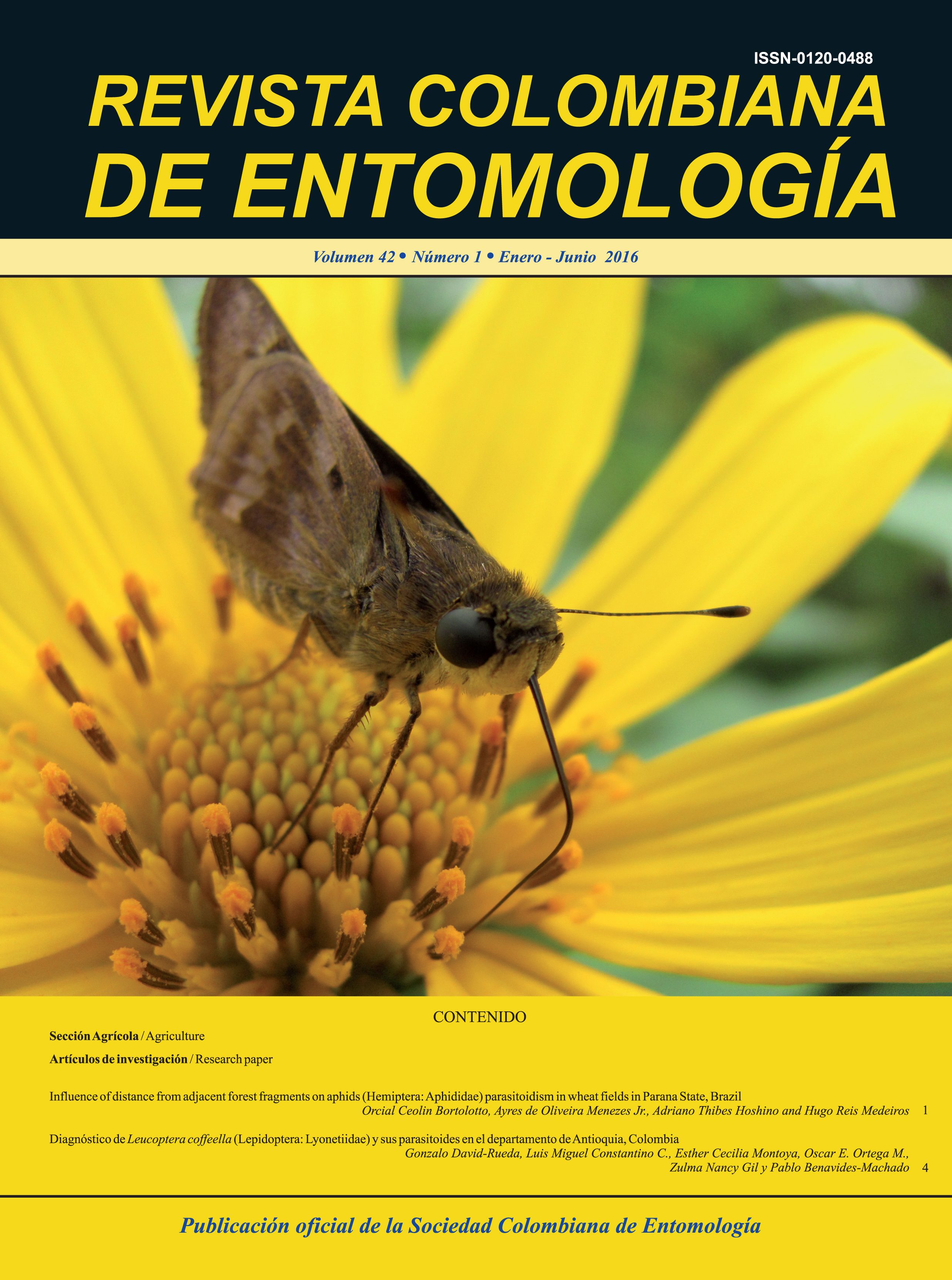Composition and structure of rove beetles (Coleoptera: Staphylinidae) in two localities from Santa María (Boyaca, Colombia)
Keywords:
Tropical rainforest, Diversity, Altitudinal gradient, Species turnoverMain Article Content
Tropical rain forests contain a high species richness and diversity of rove beetles. However, in Colombia in general, knowledge of this diversity is scarce; and even more so in ecosystems on the Eastern Range. This study records the composition and structure of rove beetles in two municipalities of Santa Maria country, in the department of Boyacá. Pitfall traps baited with different organic matter, as well as leaf litter siftings and manual collection in an altitudinal gradient between 1,000 and 1,400 m.a.s.l were used to evaluate the species richness and diversity of these beetles. In total, 1,378 beetles were collected which were grouped into 179 morphospecies, 56 genera, and 11 subfamilies. Aleocharinae was the most abundant (58.3%), while, by overall species richness, Aleocharinae (32%), Staphylininae (17%), and Pselaphinae (16%) were the best represented. High levels of diversity in La Almenara and the “Hiya Quye” ecological trail contribute to regional diversity; however, significant differences in abundance were found between the two localities studied. Species turnover rates were high, with large variations in the composition of rove beetles throughout the altitudinal gradient in both localities studied reflected in a low index of similarity (between 0.17 and 0.27). Genera such as Belonuchus, Philothalpus, Aleochara, Hoplandria, Atheta, Prionopedinus, Anotylus, Coproporus, Holotrochus, and Trimicerus were found in the altitudinal gradient studied.
Downloads

This work is licensed under a Creative Commons Attribution-NonCommercial-ShareAlike 4.0 International License.
Authors retain the copyright on their work and are responsible for the ideas expressed in them. Once a manuscript is approved for publication, authors are asked for a publication license for the term of legal protection, for all territories that allows the use, dissemination and disclosure of the same.

